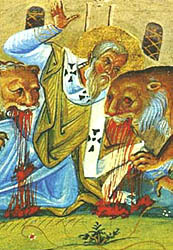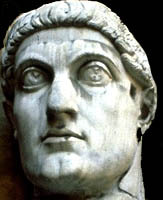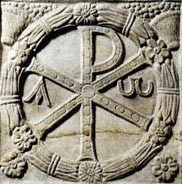Shop by Brand
ROMAN COIN JEWELRY
Ancient Roman Coin Jewelry

The Roman Empire was a unique association of peoples and places such as the Mediterranean World had never seen before. What had been a patchwork of Hellenistic monarchies, independent city-states, and Celtic tribes was miraculously united into one great political entity. At its peak rule, the Roman Empire stretched from Spain to Syria and England to Egypt. The Roman Republic was founded in 509 B.C. and in its earliest times, was ruled by kings and chieftains. In 27 B.C., the Empire was formally established with the title of "Augustus" given to its then ruler Octavian. From that point on, the emperor was referred to as "Augustus", his immediate heir "Caesar" and imperial wives were titled "Augusta".
Much of the success of the Empire can be attributed to the protection afforded by its near invincible war machine, the Roman army. Many tactics and weapons were first pioneered by this massive military force and just the thought of having to challenge this entity thwarted many a foreign enemy. Those that were brave (or foolish) enough to go up against Rome's military were quickly made examples of to the rest of the world. The technology and strength of the Roman military was the guardian of this great society for some 500 years.
Our modern world today benefits much from a host of technological innovations first given to us by the ancient Romans. From simple inventions such as blown glass and underground sewer systems to major concepts in civil engineering and the Roman calendar.
 The middle to late third century A.D. was a particularly turbulent time in Roman history. The half-century from 235 to 284 A.D. is known as the period of the "Barracks Emperors". During this time, there were 34 regular emperors and at least 50 usurpers. Of this number, only two died of natural causes, the rest falling victim to violent deaths, many being assassinated by their own troops. The longest lasting emperors were successful generals, mainly of provincial and non-aristocratic stock, vying for the loyalty of the troops with promises of money. Civil war and the plague ravaged the countryside. Half the population of the slums of Alexandria perished from the illness. At one point, 5000 people A DAY died in Rome!
The middle to late third century A.D. was a particularly turbulent time in Roman history. The half-century from 235 to 284 A.D. is known as the period of the "Barracks Emperors". During this time, there were 34 regular emperors and at least 50 usurpers. Of this number, only two died of natural causes, the rest falling victim to violent deaths, many being assassinated by their own troops. The longest lasting emperors were successful generals, mainly of provincial and non-aristocratic stock, vying for the loyalty of the troops with promises of money. Civil war and the plague ravaged the countryside. Half the population of the slums of Alexandria perished from the illness. At one point, 5000 people A DAY died in Rome!
No event in Roman history was probably more pivotal than that of the Christian conversion of the emperor Constantine. Up to that time, Christians were heavily persecuted by many of the previous emperors and the religion was outlawed. That would all change in 324 A.D..  Constantine was encamped with his army at the Milvian Bridge, heavily outnumbered by the armies of his challenger Maxentius, across the river. The following historical account was recorded at that time by an ancient writer as follows: "Constantine was praying to his father's god, beseeching him to tell him who he was and imploring him to stretch out his right hand to help him in his present difficulties. While he was fervently praying, an incredible sign appeared to him from heaven. (It would be hard to believe his account if it had been told by anyone else. But the victorious emperor long afterwards declared it to the writer of this history -- when I was honored to meet and talk with him and he even confirmed his statement by an oath. Thus, who could doubt him, especially since time has established its truth?) He said that about noon, when the day was already beginning to decline, he saw with his own eyes the trophy of a cross of light in the heavens, above the sun, and an inscription that said 'Conquer by This' attached to it. Seeing this, he and his army, which followed him on an expedition and witnessed the miracle, were struck with amazement.
Constantine was encamped with his army at the Milvian Bridge, heavily outnumbered by the armies of his challenger Maxentius, across the river. The following historical account was recorded at that time by an ancient writer as follows: "Constantine was praying to his father's god, beseeching him to tell him who he was and imploring him to stretch out his right hand to help him in his present difficulties. While he was fervently praying, an incredible sign appeared to him from heaven. (It would be hard to believe his account if it had been told by anyone else. But the victorious emperor long afterwards declared it to the writer of this history -- when I was honored to meet and talk with him and he even confirmed his statement by an oath. Thus, who could doubt him, especially since time has established its truth?) He said that about noon, when the day was already beginning to decline, he saw with his own eyes the trophy of a cross of light in the heavens, above the sun, and an inscription that said 'Conquer by This' attached to it. Seeing this, he and his army, which followed him on an expedition and witnessed the miracle, were struck with amazement.
"He said that he doubted within himself what importance the vision might hold. He continued to ponder its meaning through until he fell asleep. While sleeping, the Christ of God appeared to him with the same sign he had seen earlier in the heavens. God commanded him to make a likeness of that sign which he had seen in the heavens and to use it as a safeguard in all encounters with his enemies." Immediately, Constantine placed the sign of Christ on his standards and had it painted on his shields. Constantine won the day with a decisive victory and Maxentius, thrown from the Milvian Bridge, was drowned when the weight of his armor caused him to sink into the mud and ooze at the bottom of the River Tiber. His body was recovered the day after the battle. From this point on, Christianity became the official religion of the Empire and the capitol was moved from Rome to Constantinople (modern day Istanbul, Turkey).
Immediately, Constantine placed the sign of Christ on his standards and had it painted on his shields. Constantine won the day with a decisive victory and Maxentius, thrown from the Milvian Bridge, was drowned when the weight of his armor caused him to sink into the mud and ooze at the bottom of the River Tiber. His body was recovered the day after the battle. From this point on, Christianity became the official religion of the Empire and the capitol was moved from Rome to Constantinople (modern day Istanbul, Turkey).
The Roman Empire went on for many years thereafter predominantly as a Christian-ruled empire. In 395 A.D. Theodosius formally split the empire into east and west halves amongst his two sons, Arcadius and Honorius. The western half crumbled in the fifth century A.D. to a host of barbarian puppet-emperors and warlords. The eastern half started its transformation into the Byzantine empire and would continue until the sack of Constantinople by the Ottomans, in 1453 A.D..
 US DOLLAR
US DOLLAR
 EURO
EURO
 AUSTRALIAN DOLLAR
AUSTRALIAN DOLLAR
 CANADIAN DOLLAR
CANADIAN DOLLAR
 POUND STERLING
POUND STERLING
